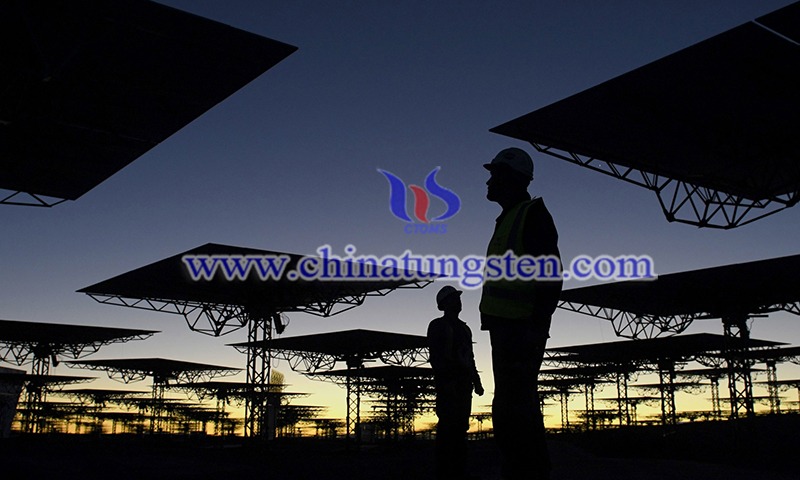Rare Earth Minerals Pose Challenge in Clean Energy Transition
- Details
- Category: Tungsten's News
- Published on Thursday, 24 March 2022 20:47
Renewable energy has many benefits when talking about the transition from fossil fuels to an energy economy, however, there is also a major challenge that must be addressed when calling for this shift - rare earth minerals, which are used in the construction of many clean energy technologies.
The types of mineral resources used in the new energy transition vary by technology. Lithium, nickel, cobalt, manganese, and graphite are critical to battery performance, longevity, and energy density. Rare earth elements are critical for permanent magnets, which are essential for wind turbines and electric vehicle motors. Power networks require large amounts of copper and aluminum, and copper is the cornerstone of all power-related technologies.

The shift to clean energy systems will drive a huge increase in demand for these minerals, meaning that the energy sector is becoming a major force in the minerals market. Until the mid-2010s, for most minerals, the energy sector accounted for only a small portion of total demand. However, as the energy transition gathers pace, clean energy technologies are becoming the fastest-growing segment of demand.
Consistent with the Paris Agreement targets (e.g. IEA sustainability scenarios), the share of key elements in total demand rises significantly over the next 20 years, to over 40% for copper and rare earth elements, 60-70% for nickel and cobalt, and almost 90% for lithium.
Rare earth elements (or critical minerals) are necessary inputs for many newer technologies, such as cell phones, rechargeable batteries, electric cars, and solar panels. Despite the name, they are not that rare. It's just hard to find concentrations large enough to mine them.
The International Energy Agency found that since 2010, “the average amount of minerals needed for a new unit of power generation capacity has increased by 50 percent.” As our society embraces renewable energy, the U.S. industry will have an even greater need for these minerals.

In the United States, most of the mines are located in the Appalachian region and the West. However, these mines provide only a very small amount of the minerals used in the United States. Almost all 75-100% of the rare earth elements need to be imported. As of 2020, China is the largest miner of rare earth minerals.
The United States now relies on China to mine and refine the rare earth elements used in domestic solar panel production and other equipment manufacturers.
As our transition to renewable energy sources threatens to exploit vulnerable communities, it is critical to address this issue. Recently, the U.S. Department of the Interior launched an interagency working group to review and reform current mining laws and regulations to ensure that the transition to clean energy does not harm the environment or the health of communities.
- Rare Earth Manufacturer & Supplier, Chinatungsten Online: www.chinatungsten.com
- Tungsten News & Prices of China Tungsten Industry Association: www.ctia.com.cn
- Molybdenum News & Price: news.molybdenum.com.cn
- Tel.: 86 592 5129696; Fax: 86 592 5129797; Email: sales@chinatungsten.com



 sales@chinatungsten.com
sales@chinatungsten.com